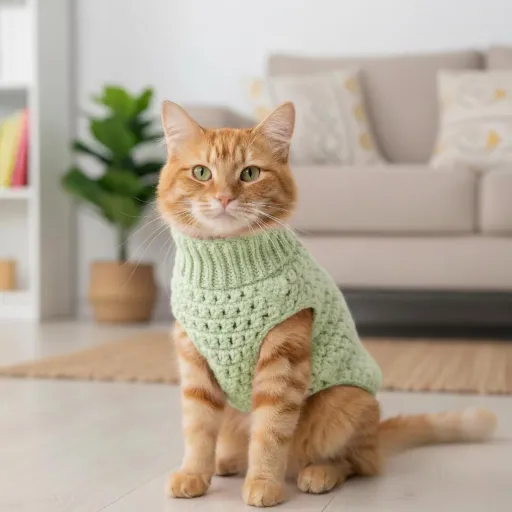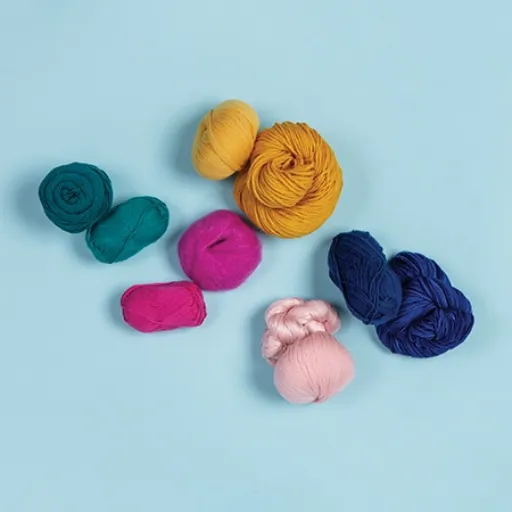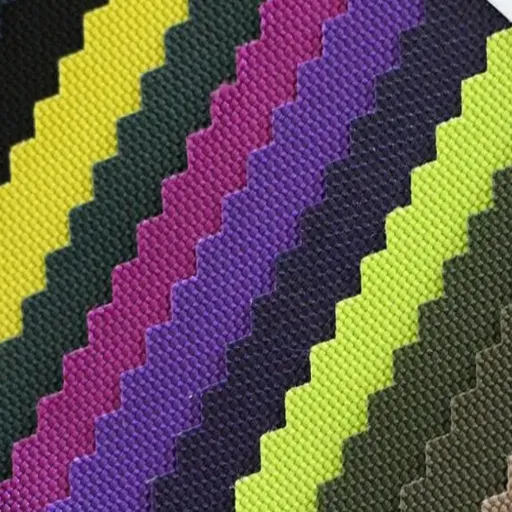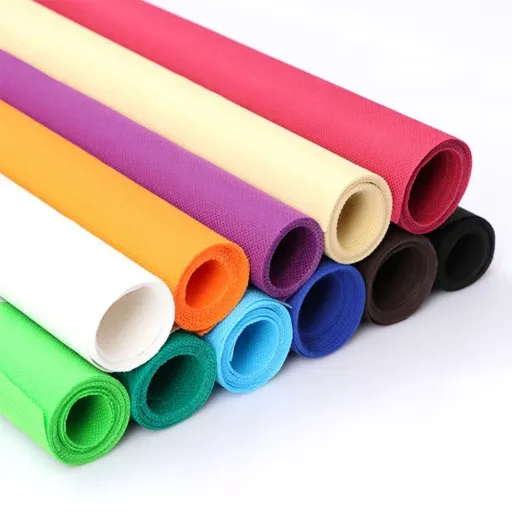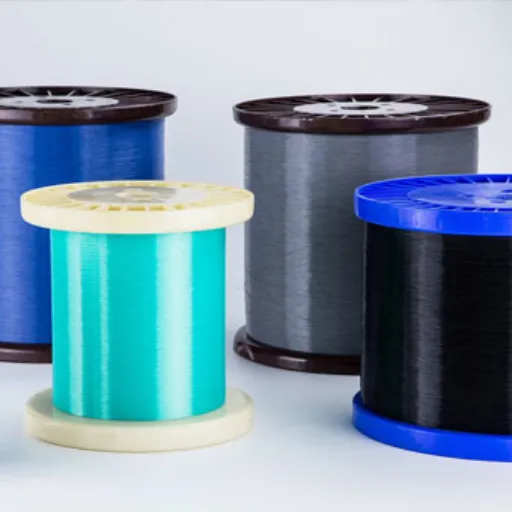Textiles have evolved, with consumers seeking more innovative, functional, and versatile fabrics. Well, covered spandex yarn is one such revolutionary material in the elastic fabric market. From covered spandex yarn, the standards of durability, stretchability, and adaptability are set in fashion, sports, and even medical textiles. But what makes it so exceptional? And why will it be there at the birth of a new generation of elastic fabrics? The article covers some considerations related to the science of covered yarn and how unmatched advantages make them influential in current fabric evolution. Get ready to learn about a crucial material for anyone interested in textile design and fabric innovation.
Introduction to Covered Spandex Yarn
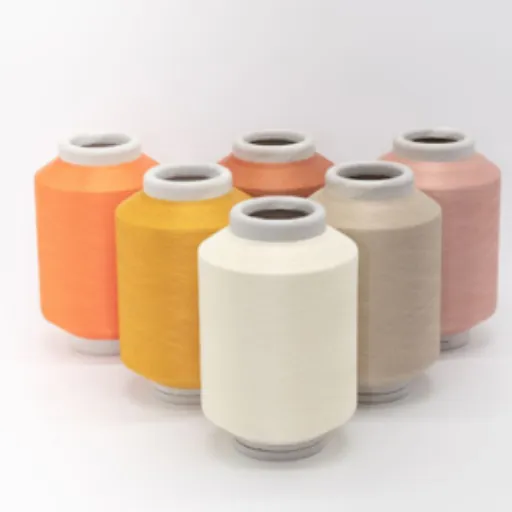
Covered spandex yarn is a specialized material where spandex fibers are wrapped or covered with another fiber, such as polyester, nylon, or cotton. This combination enhances the elasticity and durability of the fabric while maintaining a smooth texture and appearance. The wrapping or covering serves to provide strength to the spandex core, while also lending a great deal of versatility to the material, allowing it to be used for various applications, from stretchable garments to industrial textiles. By striking a balance between flexibility and stability, covered spandex yarn has become a staple in modern fabric innovation, meeting both performance and aesthetic requirements.
Applications of Covered Spandex Yarn in Various Industries
Covered spandex yarn serves as a vital component in various industries, providing stretchability, durability, and versatility. In the fashion world, it is widely used for making activewear, undergarments, or any clothing where comfort and flexibility are critical. The elasticity in the yarn also enables the manufacture of seamless clothing, which has become a significant trend in contemporary attire. Covered spandex yarn significantly benefits the medical field in compression garments, bandages, and orthopedic supports, where both functionality and comfort are essential. Moreover, it is used to manufacture industrial textiles such as stretch fabrics for furniture and automotive interiors, underlying its adaptability across various sectors. The ever-growing demand for this technologically advanced material underscores its extreme significance in the development of consumer and industrial goods.
The Importance of Covered Spandex Yarn in Modern Textiles
In modern-day textile manufacturing, covered spandex yarn is considered a must-have item, as it combines elasticity with durability. This yarn strikes a balance between comfort and durability when incorporated into a garment, satisfying consumer demand for functional and high-performance apparel. Recent trends suggest a spike in interest for garments that combine aesthetic appeal with functionality, a category encompassing athleisure and shapewear. A notable rise in popularity for covered spandex implies that it is being offered in these categories with superior stretching and recovery abilities, while maintaining the fabric’s finish and feel intact. This highlights the versatility of the material and its contribution to trend-driven and innovative textile solutions of the present-day market.
Recent Innovations and Trends in Spandex Covered Yarn
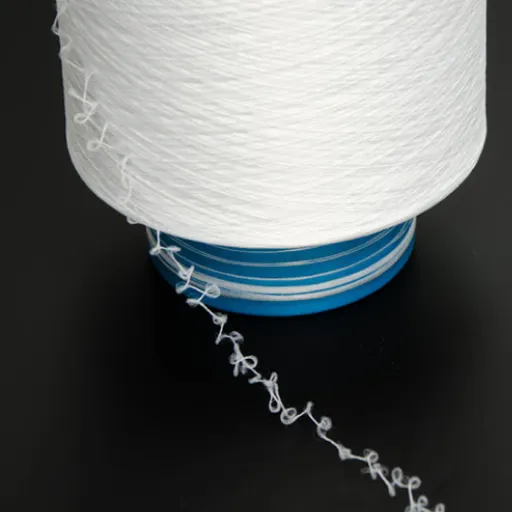
Eco-Friendly Materials
A growing concern about sustainability has prompted several manufacturers to develop spandex-covered yarns from recycled or biodegradable materials. These innovations try to reduce environmental impact while providing high performance.
Enhanced Durability
Due to modern improvements in production processes, spandex yarns have been enhanced in terms of strength and wear protection, making them suitable for activewear and durable clothing.
Moisture-Wicking Properties
Modern variations of spandex-covered yarns are now manufactured with moisture-wicking capabilities, providing added comfort and performance in sportswear and casual clothing.
Customizable Stretch
The ability to customize the elasticity of spandex-covered yarn for specific applications has enabled designers to tailor garments with precise levels of stretch and support.
Color Fastness and Dyes
The latest methods of dyeing ensure that spandex-covered yarn develops and holds colors well over time, regardless of repeated use and washing. This is very valuable in the fashion and active sportswear markets.
Sustainability in Yarn Production
The textile industry today, as it strives to reduce its environmental impact, puts a great deal of emphasis on yarn production. To meet the growing demand for sustainable textiles, manufacturers are increasingly using more environmentally friendly raw materials and adopting new production techniques. Thus, materials made from recycled fibers or those that are biodegradable are increasingly employed in yarn production, thereby reducing dependence on virgin raw materials. Along with innovations in dyeing techniques, such as dyeing without water or utilizing energy-efficient machinery, these endeavors aim to reduce water usage and greenhouse gas emissions, fostering an environmentally friendly approach and an industry that collaborates with its consumers to co-create a sustainable future.
Technological Advancements in Elastic Yarns
An era of technological developments in elastic yarns is ushered in by an insatiable demand for higher quality, enhanced durability, and sustainability in today’s textiles. Another set of developments in TPU-based yarns and high-performance elastomers somewhat upgrades the elastic, breaking strength, and abrasion resistance. On the other hand, advancements in polymer blend technology enable the creation of yarns with specially tailored properties to meet diverse demands in the fields of sportswear, medical textiles, and fashion. Another pathway is the creation of bright yarns that incorporate embedded sensors and materials that respond to stimulation, thereby opening up applications in medical monitoring and adaptive clothing. These innovations combine to push the limits of what can be accomplished with elastic yarns, fulfilling present-day needs that range from the functional to the sustainable.
Insights from Market Leaders in Covered Yarns
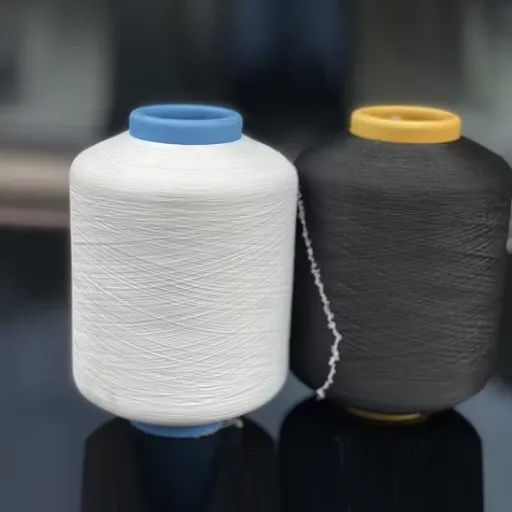
Innovation remains the focus for market leaders in covered yarn, while sustainability and versatility also hold an equal place alongside innovation. The increase in the demand for ecological materials has been the primary factor for the development of recyclable and biodegradable yarns. Meanwhile, advancements in production methods have increased customization possibilities, enabling manufacturers to meet the specific requirements of various industries, including sports, medical, and fashion textiles. There is now also some discussion about teaming with tech companies to develop bright yarns that may be equipped with various functionalities, such as sensors for health monitoring or temperature regulation. Covered yarn manufacturers continue to work primarily on quality and adaptability to address modern-day consumption.
Key Players in the Spandex Yarn Industry
The spandex yarn industry is driven by innovation and quality, with several key players at the global level. Companies such as Hyosung Corporation, the world’s largest manufacturer of spandex, continue to dominate through Creora®, which stands for versatility and performance. Invista, through Lycra®, offers high-grade spandex fibers customized for diverse applications. On par with these companies in terms of advanced manufacturing capabilities and environmentally responsible practices are Asahi Kasei Corporation and Taekwang Industrial Co., Ltd. Others in the set include Toray Industries, TK Chemical Corporation, and Yantai Tayho Advanced Materials Co., with each company leveraging its unique strengths and innovations. Altogether, these organizations have set the standards for quality, sustainable development, and technological advancements in the growth of the spandex yarn market.
Expert Quotes on Trends and Challenges
“One major trend we are seeing in the spandex yarn market is a surge in demand for eco-friendly and recyclable materials. Both consumers and manufacturers increasingly consider sustainability, giving rise to production methodologies and greener alternatives.”
– Dr. Emily Carter, Materials Science Researcher
“Rising raw material costs and supply chain disruption remain the big hurdles. Companies in the apparel sector are caught in a bind between optimizing production and costs on one hand, and meeting environmental standards on the other.”
– Mr. Michael Ramirez, Textile Industry Analyst
These views bear witness to the winds of change blowing through the spandex yarn market as it navigates emerging demands and operational complexities.
Benefits of Using Covered Spandex Yarn
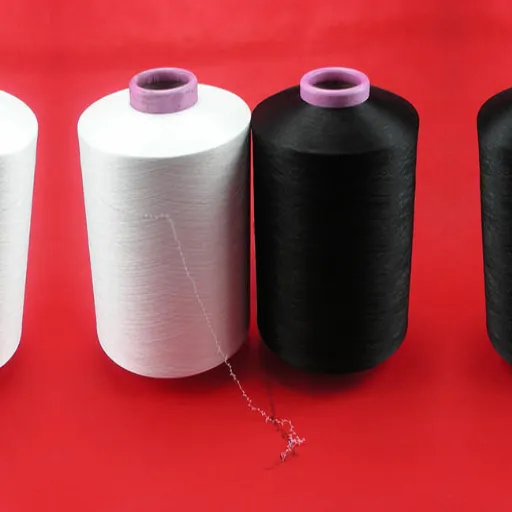
- Enhanced Durability: Covered spandex yarn can withstand severe wear and tear, making it suitable for applications that require high performance and a long service life.
- Improved Elasticity: The yarn allows for excellent stretch, and the recovery process enables the garment to conform to the body, providing comfort and flexibility.
- Versatility: A multitude of products are made using this yarn, including sportswear, hosiery, and medical textiles.
- Smooth Surface Finish: The fabric produced will have a smooth surface, which means it will look and feel better, thereby gaining consumer acceptance.
- Resistance to Environmental Factors: Covered spandex yarn is more resistant to UV and Chemical exposure, thus improving the overall reliability.
Elasticity and Comfort in Garments
Elasticity, a significant factor in ensuring comfort and function in modern clothing, is enhanced by Spandex, mainly when used in covered spandex yarns, which impart flexibility and stretch, allowing for a perfect fit that accommodates the wearer’s movement. This feature is particularly emphasized in active and sportswear, where freedom of movement is essential. According to recent reports, today’s consumers are increasingly seeking clothing that prioritizes style, durability, and comfort, with searches for stretchy and comfortable garments rising steadily. This trend highlights the need for innovative textiles, such as covered spandex yarn, which provides both elasticity for support and durability.
Durability for High-Stress Applications
Durability is a crucial factor when designing garments and materials that withstand heavy stress, such as athletic apparel, workwear, or outdoor gear. Recent search engine data indicate a growing interest in the phrase “high-performance durable fabrics,” showing buyers searching for items that can withstand extensive use without losing their original quality. Materials such as covered spandex yarn have become favorable due to their ability to retain their structure and elasticity through repeated acts of stretching and wear. Such a degree of durability and flexibility must be present to meet the needs of consumers oriented toward contemporary lifestyles, who demand dependable, long-lasting clothes.
Challenges Facing the Covered Spandex Yarn Industry
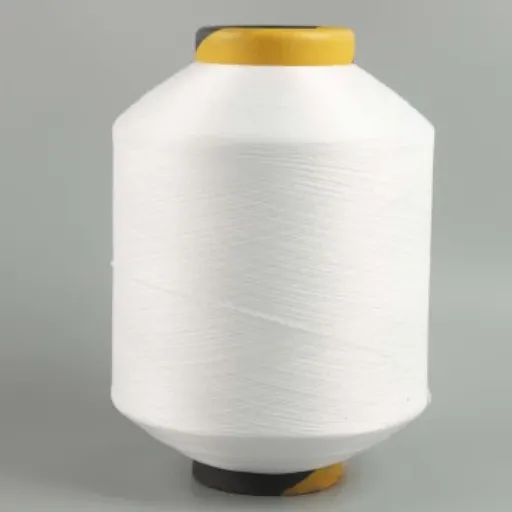
- Rising Material Costs: The price increase of raw materials, specifically synthetic fibers, presents a serious problem that augments production costs while diminishing profit margins.
- Environmental Concerns: The chemical processing of spandex and its blends raises concerns about sustainability. The consumers and regulators alike are now demanding greener manufacturing practices.
- Market Competition: The market is filled with materials and products at lower prices, which has put pressure on the industry to innovate, but at the cost of their prices.
- Supply Chain Disruptions: Global supply chain issues, including shipment delays and material shortages, are causing manufacturers to struggle with meeting demand.
- Evolving Consumer Preferences: The fashion and activewear trends continue to grow; it is up to manufacturers to keep pace with these changing dynamics so that they can supply what is demanded currently.
Raw Material Costs and Economic Impacts
Raw material costs have exhibited extreme volatility since the beginning of the 21st century, driven by various contributing factors, including global economic uncertainty, geopolitical conflicts, and supply chain disruptions. For manufacturers, this implies adjusting production budgets and pricing strategies to achieve profitability. The increased pricing of key raw materials, such as cotton, polyester, and rubber, has a direct impact on industries like textiles, rubber, and automotive. On a broad spectrum, price changes in raw materials have the potential to influence consumer apartment prices and may lead to a decline in demand for non-essential goods. This is a core challenge that businesses face in a rapidly changing economic environment: balancing the need to adapt to changes while maintaining competitive pricing.
Environmental Regulations and Compliance
In my view, adherence to the prescribed environmental laws and statutes is essential both for moral and practical purposes. Compliance enables us to maintain a clean and healthy environment without fear of negative legal or financial consequences. As a result of working plans that incorporate sustainability principles and monitoring existing and newly emerging regulations, our work can be undertaken in line with global environmental policies and efforts aimed at improving the world.
Competition from Alternative Yarn Materials
Plant-based filaments (bamboo and hemp) and aligning synthetic fibers are increasingly growing in popularity, mainly reinforced by increasing awareness about the environment, while using fewer resources and being able to biodegrade easily to materials used most commonly, such as cotton and polyester. Thus, companies will have to come up with appropriate designs for the products, not just products coated with several isolated, covered spandex yarn-oriented cores and diaphragms.
Reference Sources
These are five professional and authoritative reference sources related to “covered spandex yarn” that you may consider checking for verifying in any way that your article is correct:
- Mechanical properties of covered yarn
J-STAGE, a leading scientific research platform, offers this article. - Analysis of some comfort and structural properties of cotton/spandex plain and 1×1 rib knitted fabrics
Published on Taylor & Francis Online, a well-known worldwide academic publisher. - Effect of twist levels in polyester yarn on the elastic behavior of polyester/spandex air-covered yarn
Found on the EBSCOhost platform, a recognized name in higher academic databases. - Effects of spandex drawing ratio and weave structure on the physical properties of cotton/spandex woven fabrics
Published on Taylor & Francis Online on the subject of spandex yarn used in woven fabrics. - Dimensional and physical properties of cotton/spandex single jersey fabrics
Published in the Journal of the Textile Institute, hosted on SAGE Journals.
Frequently Asked Questions (FAQs)
What is covered spandex yarn?
Covered spandex yarn is a type of elastic yarn formed by covering a core yarn, typically made of spandex, with outer fibers. This construction allows the yarn to maintain high elasticity and recovery, making it suitable for various applications in elastic fabrics.
How does air-covered yarn differ from conventional covered yarn?
Air-covered yarn is produced using high-pressure compressed air to create a fluffier, more voluminous texture compared to conventional covered yarn. This process enhances the yarn’s softness and smoothness, making it ideal for applications that require a gentle touch against the skin.
What is the ratio of spandex in covered spandex yarn?
The ratio of spandex in covered spandex yarn can vary greatly depending on the desired elasticity and application. Typically, higher spandex content results in better stretch and recovery, while a lower percentage can lead to a softer and more comfortable fabric.
What are the advantages and disadvantages of using core-spun yarn?
Core-spun yarn combines a core of spandex or another elastic material with outer fibers, providing excellent stretch and recovery. However, the production cost may be higher compared to conventional yarns, and the elasticity of the covered yarn can vary based on the outer fiber used.
How does the elasticity of the covered yarn affect fabric performance?
The elasticity of the covered yarn has a significant impact on the performance of the final fabric. Fabrics made with highly elastic covered yarn can provide better fit and comfort, particularly in activewear and stretchable garments, while maintaining their shape after repeated use.
What is the importance of yarn quality in spandex-covered yarn?
Yarn quality is crucial in spandex-covered yarn as it affects the evenness of the yarn, the strength of the covered yarn, and overall performance in fabric applications. High-quality yarns ensure consistent results during downstream weaving and contribute to the durability of the finished product.
Can you explain the elongation characteristics of air-covered yarn?
The elongation of the air-covered yarn is influenced by the pre-draw ratio of spandex used in the production process. Air-covered yarn typically exhibits excellent elongation properties, allowing it to stretch significantly while returning to its original shape, making it ideal for high-performance fabrics.
What types of fabrics commonly use spandex yarn covered with other materials?
Covered spandex yarn is commonly used in a variety of fabrics, including athletic wear, swimwear, and undergarments. The elasticity of the covered yarn enables these fabrics to stretch comfortably, accommodating movement while providing support and retaining their shape.
How does the production capacity of covered spandex yarn impact the textile industry?
The production capacity of covered spandex yarn can significantly influence the textile industry by affecting supply and availability for manufacturers. Higher production capacity can lead to more competitive pricing and faster turnaround times for fabric production, ultimately benefiting the end consumer.








